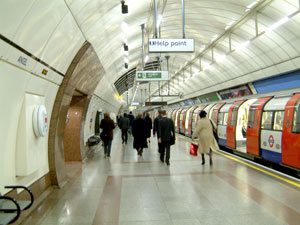
Audio induction loops for the hard of hearing can provide a lifeline for the hearing impaired. For many hearing aid users (approximately two million people in the UK), they allow them to reconnect to society. Instead of deferring or cancelling a journey through fear of embarrassment and confusion as they struggle to communicate, they will travel.
Working directly with the hearing aid, the induction loop system should filter out all the background noise and provide intelligible sound through the aid. But, like early PA systems, many do not live up to expectations and for the benefit they offer, the money may just as well have been pored down the grid.
‘What did he say?’ was the common response whenever an announcement was made over early PA systems, be it the late departure of the 10:50 to Newcastle or the emergency evacuation of the station. PA systems were awful and in many cases not fit for purpose. The actual audio equipment, amplifier, microphone and speakers may have been first class, but since the system was not designed specifically for the acoustic environment where it was being installed it was always hit or miss, mainly miss, as to whether it performed well or not.
Thankfully, PA systems have improved as system designers, specifies, installers and facility managers take an holistic approach to the procurement of the system.
The same approach is desperately needed for induction loop systems. To work well, the Induction loop system must be designed around the magnetic environment in which it is expected to operate, including the metal content of the building structure.
The Disability Discrimination Act requires that an equal level of service be provided where it is reasonable to do so. This implies that simply installing an induction loop system, as with the early PAs, is not enough. The system must provide a benefit to the user: common sense that is regularly ignored.
By giving careful consideration to the environment, which is particularly demanding in train termini, and good design, it is practical to install good induction loop systems in all locations throughout the transport hub, i.e. ticket halls, information/help points, concourses, platforms, and lifts.
Ticket Halls – Installing independent induction loop systems at each ticket window is made simple by use of Ampetronic’s counter loop system, CLD1.
The preformed loop supplied with this system has a spill field, which is smaller than the acoustic coupling between counters, so magnetic cross talk between adjacent loops is not an issue.
Since a hearing aid user will be using the T position of their hearing aid whilst at the counter, they will not hear PA announcements. The counter loop system must, therefore, have a feed from the PA or, for best practice, an independent loop covering the ticket hall fed by the PA system should be installed as designed by Ampetronic for the London Underground as part of its on-going refurbishment programme.
Information / Help Points
Help points, like London Underground’s iconic white pillbox, rely on an intercom and therefore a good induction loop system should be fitted for compliance to legislation.
As with the ticket counter, the loop should have a direct feed from the PA and for ease of use provide good coverage over a wide area. This is best achieved by installing the loop in the floor. Where a vertically mounted loop is being used, it should be made as large as is practical and offset from the listening plain – small loops provide very limited area coverage with poor field strength uniformity.
To simplify the installation, Ampetronic’s range of loop drivers for help points can operate from 12V, 24V, 48V and 240 V supplies.
Lifts
Lifts are a technically challenging environment for induction loops. The metal fabric of the lift car attenuates the magnetic field and, since this effect is frequency dependent, simply driving the loop with more current is not sufficient to maintain intelligibility.
The common solution is to fit a small loop behind the metal control panel. A signal may be audible with a suitable receiver when standing very close to such a system. However, the high frequency components will be severely attenuated and intelligibility lost. Back to the old PA!
Ampetronic’s unique solution generates a flat frequency response necessary for intelligibility and provides full area coverage, essential for busy lifts or calming some one down who is trapped.
Platforms and Concourses
Providing coverage on platforms and concourses with feeds from the PA/VA system is quite straightforward. For platforms, a single turn loop driven by Ampetronic’s ILD9 with VA monitoring is generally capable of providing full area coverage.
For a concourse, a phased array loop design with metal loss correction may be required. Retrofitting these systems is possible. However, it is easier to include the provision of induction loop systems as part of a planned refurbishment programme.
Careful design and the appropriate equipment is the key to ensuring hearing impaired rail users truly benefit from the DDA’s directives and are not palmed off with systems that simply tick the right boxes for compliance.